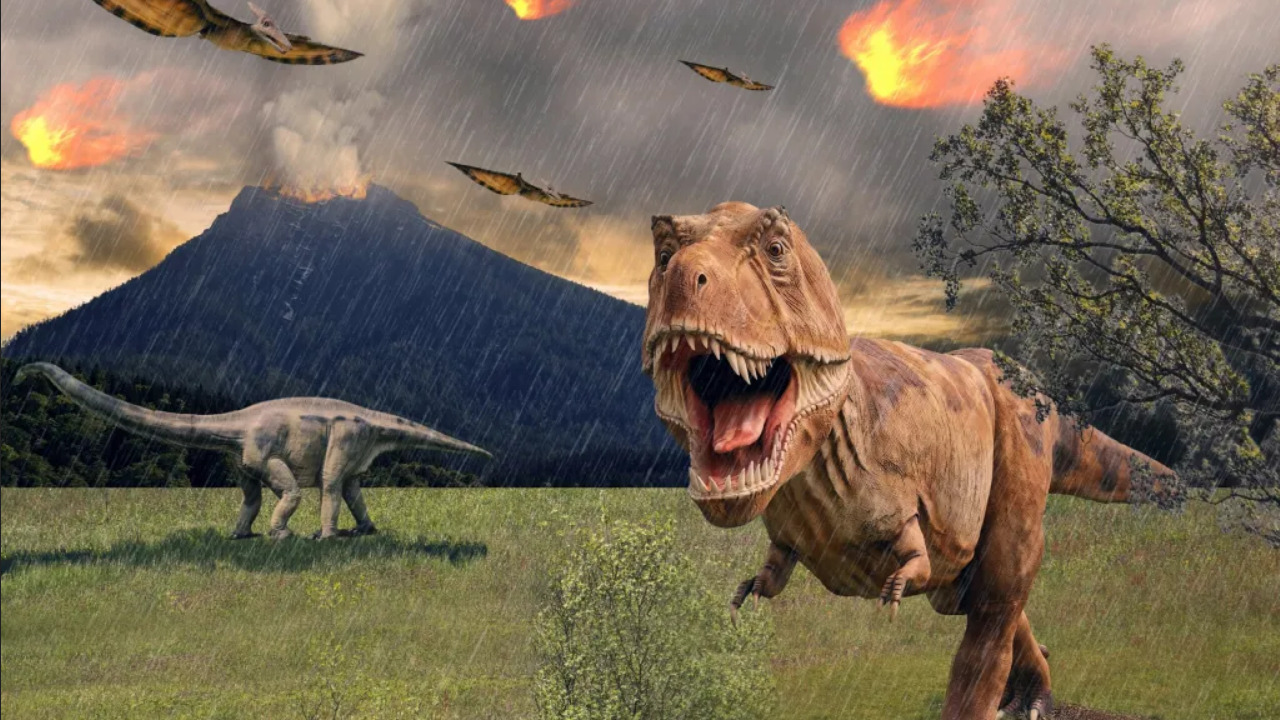
Current Biology: Human ancestors witnessed the extinction of dinosaurs
The question of when did placental mammals, which include humans, appear on Earth — before or after the extinction of the dinosaurs? — it was considered controversial for a long time. Research by the staff of the University of Bristol and The University of Fribourg can put an end to this debate, writes Earth.com. It showed that the earliest forms of our distant placental ancestors appeared already in the Cretaceous period, briefly catching dinosaurs and even witnessing their death.
Non-avian dinosaurs disappeared from the face of the Earth as a result of the Cretaceous-Paleogene extinction event about 66 million years ago. The oldest placental fossils found were found in younger rocks formed after the fateful fall of an asteroid that left behind the Chikshulub crater on the Yucatan Peninsula. That is, there is no direct evidence that placentals were contemporaries of dinosaurs.
The authors of the new study built a model that allowed us to rewind time and restore the links unknown to us. After analyzing the available placental fossils, they identified patterns of occurrence and extinction of various groups and were able to build a model of their evolution. She showed that the earliest representatives of placentals could have appeared already in the Cretaceous period and coexisted with dinosaurs for some time.
In total, the researchers examined a dataset representing 380 placental families. It turned out that 21,3% of them could have existed even in the Cretaceous period, including groups from which primates, dogs and cats, hares later developed.
More closely related to modern placental species began to appear after the fall of the asteroid, which caused a mass extinction. The disappearance of competition from dinosaurs and other species that have become victims of extinction probably helped.
The study A timescale for placental mammal diversification based on Bayesian modeling of the fossil record is published in the journal Current Biology.
Cretaceous-Paleogene extinction event
One of the five «great mass extinctions» in Earth's history occurred approximately 66 million years ago, marking the end of the Cretaceous Period and the beginning of the Paleogene. The hypothesis that most scientists adhere to today suggests that the cause was a large asteroid or comet that crashed into the Earth near the current Yucatan Peninsula in Mexico. When a celestial body with a diameter of 10-15 kilometers fell, a huge amount of energy was released, which led to fires, tsunamis and severe storms. The release of debris into the atmosphere blocked sunlight and marked the beginning of global cooling. It radically changed the Earth's climate in the following years and led to a mass extinction, the victims of which were non-avian dinosaurs and other groups of mammals and birds, marine reptiles and invertebrates. In total, about 75% of all species on Earth have disappeared. The subsequent restoration of life on the planet took millions of years.